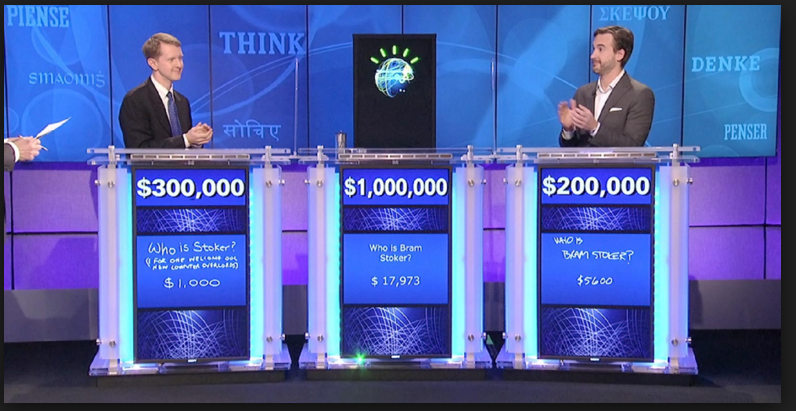For a good bit of this year’s We Robot, it felt like abstract “AI” – that is, algorithms running on computers with no mobility – had swallowed the robots whose future this conference was invented to think about. This despite a pre-conference visit to Boston Dynamics, which showed off its Atlas
robot‘s ability to do gymnastics. It’s cute, but is it useful? Your washing machine is smarter, and its intelligence solves real problems like how to use less water.
There’s always some uncertainty about boundaries at this event: is a machine learning decision making system a robot? At the inaugural We Robot in 2012, the engineer Bill Smart summed up the difference: “My iPhone can’t stab me in my bed.” Of course, neither could an early Roomba, which most would agree was the first domestic robot. However, it was also dumb as a floor tile, achieving cleanliness through random repetition rather than intelligent mapping. In the Roomba 1.0 sense, a “robot” is “a device that does boring things so I don’t have to”. Not cool, but useful, and solves a real problem
During a session in which participants played a game designed to highlight the conflicts inherent in designing an urban drone delivery system, Lael Odhner offered yet another definition: “A robot is a literary device we use to voice our discomfort with technology.” In the context of an event where participants think through the challenges robots bring to law and policy, this may be the closest approximation.
In the design exercise, our table’s three choices were: fund the FAA (so they can devise and enforce rules and policies), build it as a municipally-owned public service both companies and individuals can use as customers, and ban advertising on the drones for reasons of both safety and offensiveness. A similar exercise last year produced more specific rules, but also led us to realize that a drone delivery service had no benefits over current delivery services.
Much depends on scale. One reason we chose a municipal public service was the scale of noise and environmental impact inevitably generated by multiple competing commercial services. In a paper, Woody Hartzog examined the meaning of “scale”: is scale *more*, or is scale *different*? You can argue, as net.wars often has, that scale *creates* difference, but it’s rarely clear where to place the threshold, or how reaching it changes a technology’s harms or who it makes vulnerable. Ryan Calo and Daniella DiPaola suggested that rather than associate vulnerability with particular classes of people we should see it as variable with circumstances: “Everyone is vulnerable sometimes, and vulnerability is a state that can be created and manipulated toward particular ends.” This seems a more logical and fairer approach.
An aspect of this is that there are two types of rules: harm rules, which empower institutions to limit harm, and power rules, which empower individuals to protect themselves. A possible worked example soon presented itself in Kegan J Strawn;s and Daniel Sokol‘s paper on safety techniques in mobile robots, which suggested copying medical ethics’ consent approach. Then someone described the street scene in which every pedestrian had to give consent to every passing experimental Tesla, a possibly an even worse scenario than ad-bearing delivery drones. Pedestrians get nothing out of the situation, and Teslas don’t become safer. What you really want is for car companies not to test the safety of autonomous vehicles on public roads with pedestrians as unwitting crash test dummies.
I try to think every year how our ideas about inegrating robots into society are changing over time. An unusual paper from Maria P. Angel considered this question with respect to privacy scholarship by surveying 1990s writing and 20 years of papers presented at Privacy Law Scholars. We Robot co-founders Calo, Michael Froomkin, and Ian Kerr partly copied its design. Angel’s conclusion is roughly that the 1990s saw calls for an end to self-regulation while the 2000s moved from privacy as necessary for individual autonomy and self-determination to collective benefits and most recently to its importance for human flourishing.
As Hartzog commented, he came to the first We Robot with the belief that “Robots are magic”, only to encounter Smart’s “really fancy hammers.” And, Smart and Cindy Grimm added in 2018, controlled by sensors that are “late, noisy, and wrong”. Hartzog’s early excitement was shared by many of us; the future looked so *interesting* when it was almost entirely imaginary.
Over time, the robotic future has become more nowish, and has shifted in response to technological development; the discussion has become more about real systems (2022) than imagined future ones. The arrival of real robots on our streets – for example, San Francisco’s 2017 use of security robots to deter homeless camps – changed parts of the discussion from theoretical to practical.
In the mid-2010s, much discussion focused on problems of fairness, especially to humans in the loop, who, Madeleine Claire Elish correctly predicted in 2016 would be blamed for failures. More recently, the proliferation of data-gathering devices (sensors, cameras) into everything from truckers’ cabs to agriculture and the arrival of new algorithmic systems dubbed AI has raised awareness of the companies behind these technologies. And, latterly, that often the technology diverts attention from the better possibilities of structural change.
But that’s not as cool.
Illustrations: Boston Dynamics’ Atlas robots doing synchronized backflips (via YouTube).
Wendy M. Grossman is the 2013 winner of the Enigma Award. Her Web site has an extensive archive of her books, articles, and music, and an archive of earlier columns in this series. She is a contributing editor for the Plutopia News Network podcast. Follow on Mastodon.








